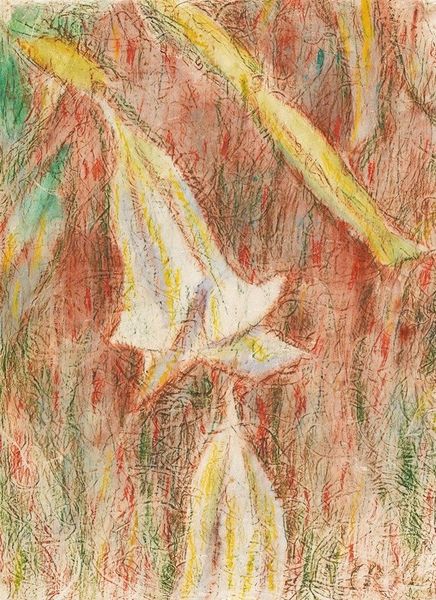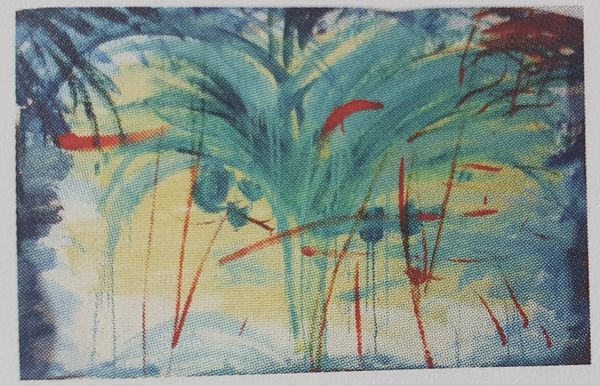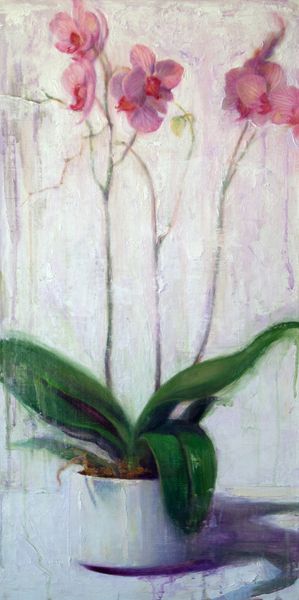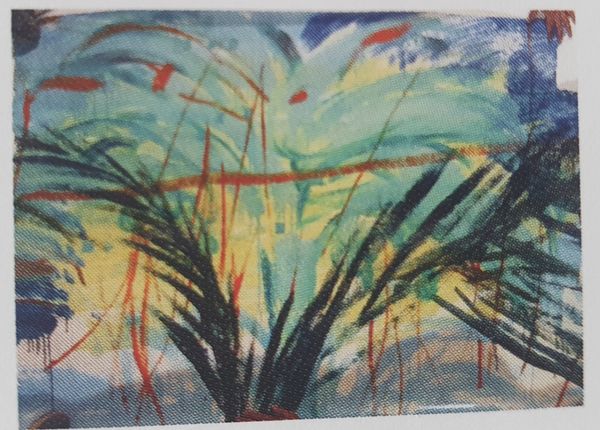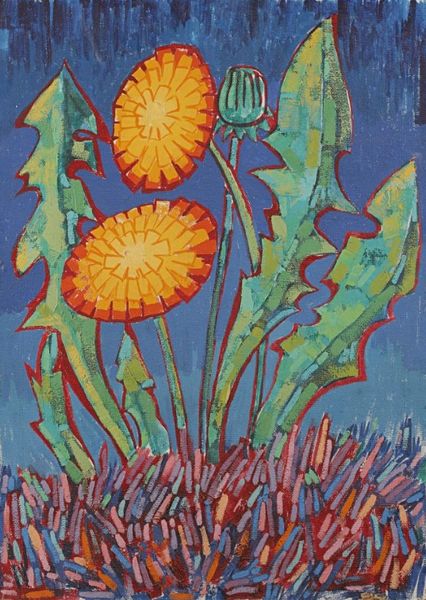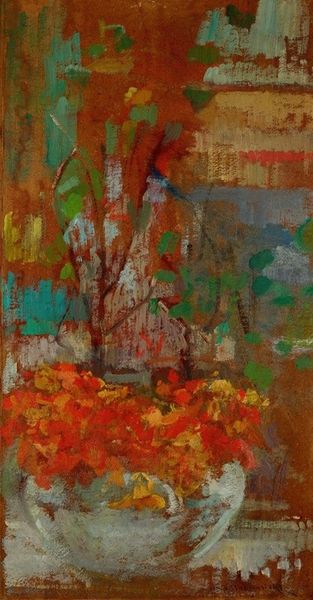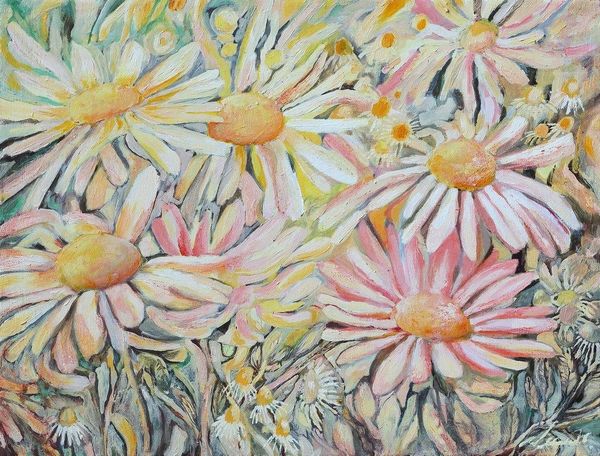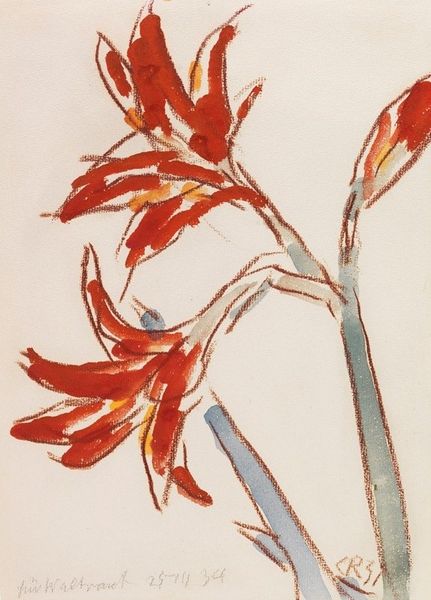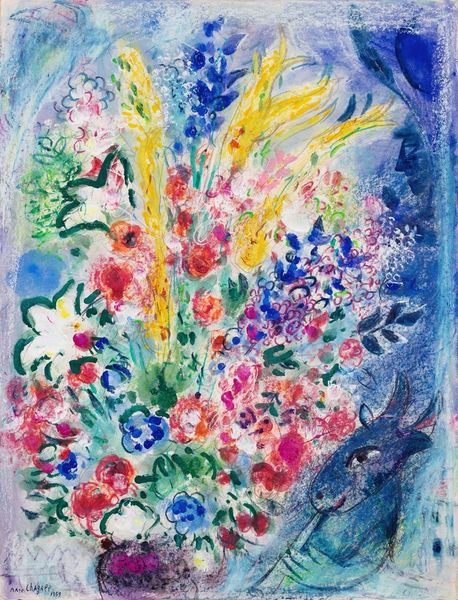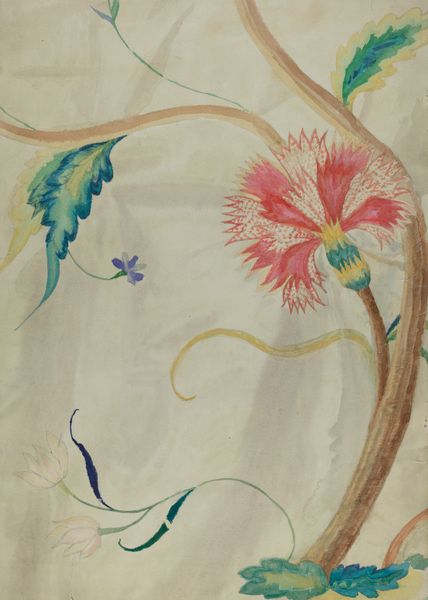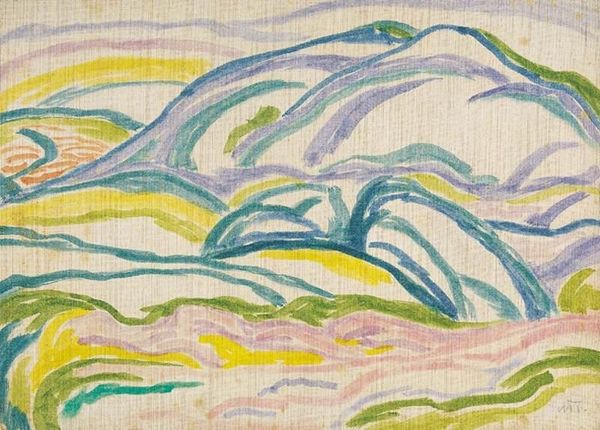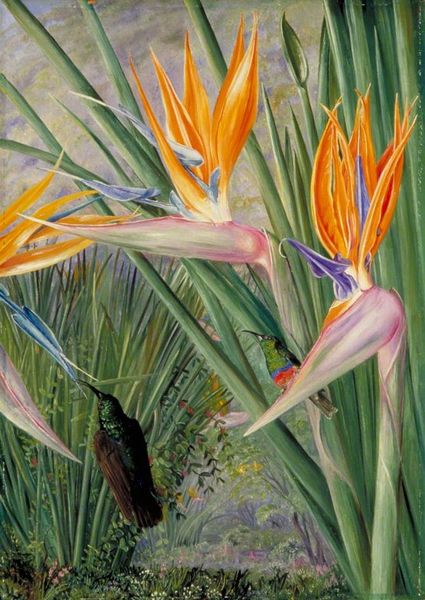
Copyright: Public Domain: Artvee
Curator: What a striking use of color! This work screams energy. Editor: Indeed. Let's dive in. What we have here is "Blumenstillleben," or "Flower Still Life," a pastel work on paper from 1934 by Christian Rohlfs. A key figure in German Expressionism, known for pushing boundaries. Curator: Expressionism suits the raw vitality present here. The lilies practically vibrate off the paper! Is it just me, or do they almost feel like flames reaching upwards? Orange lilies, traditionally linked to passion and energy... it's palpable. Editor: The visual language is key. Notice Rohlfs’s expressive linework. The wavering lines of the petals create a sense of movement and even fragility. Also, considering this work was created during the rise of Nazi Germany, flowers as symbols of nature were sometimes used as coded gestures against oppression. Curator: So, flowers standing as quiet defiance... intriguing! I am curious to know how such raw and vigorous brushstrokes and bright hues may fit in his larger artistic and historical context. Was he making a statement about the cultural climate through imagery? Editor: While it's not explicitly political, its defiant embrace of color and organic form stood against the Nazis' suppression of modern art, like many expressionists. It highlights an "inner vision," favoring emotional experience above the external world. Rohlfs was actually banned from painting later and his works were confiscated. Curator: So there's a resistance woven into this riot of color and form. The image goes from merely vibrant to bravely alive! Thanks for sharing its layered context; now the symbolic depth is much clearer for me. Editor: Always a pleasure to unlock the potential power in a visual text. It makes you reconsider everything.
Comments
No comments
Be the first to comment and join the conversation on the ultimate creative platform.
